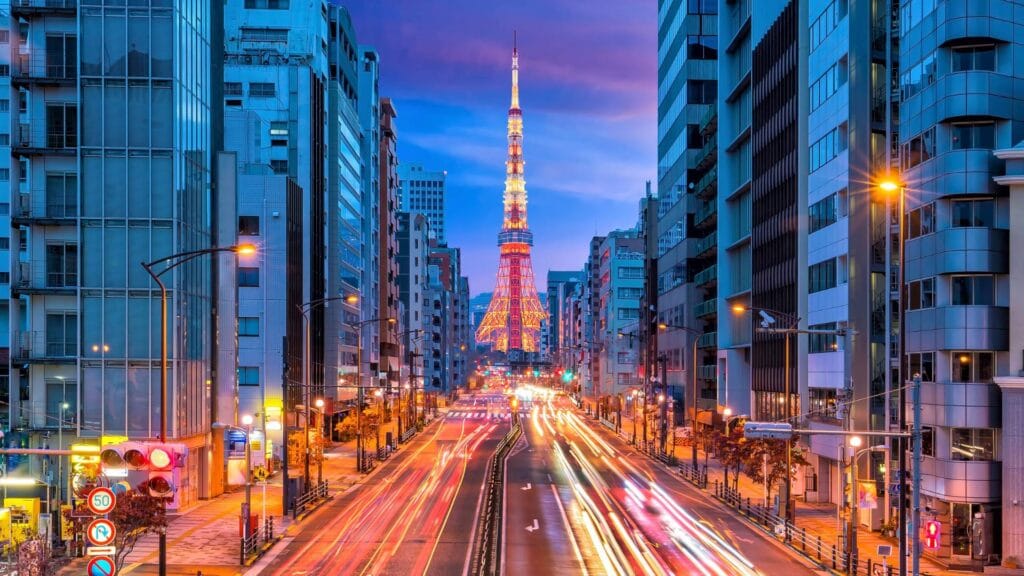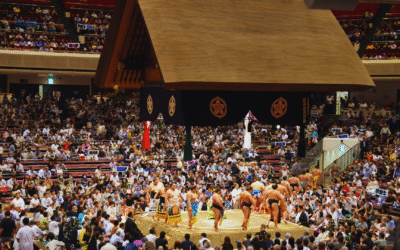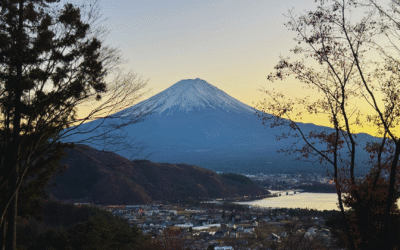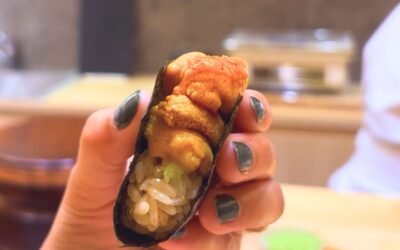So, you’re heading to Japan—lucky you! It doesn’t matter if it’s your first visit or your fifth, figuring out how to fit everything into 10 days can feel like a challenge. There’s too much good food to try, too many incredible places to see, and somehow, never enough time. Do you focus on the historic side of Japan or dive into its futuristic cities? Stick to the famous spots or wander into lesser-known neighbourhoods?
No need to overthink it—I’ve put together a 10-day Japan itinerary that balances iconic landmarks with underrated finds. This plan has a bit of everything: immersive cultural experiences, standout meals, and places that give you a real feel for the country beyond the usual tourist checklists. If you love food, history, pop culture, or just exploring new corners of a city, there’s something here for you.
Time to start mapping out your adventure. Let’s go!
Day 1: Tsukiji Market, Asakusa, Ueno, Akihabara (Stay in Tokyo)
Tsukiji Outer Market

Nothing says “I’ve arrived in Japan” quite like an early morning wander through Tsukiji Outer Market, once the largest fish market in the world. While the inner market has moved to Toyosu, Tsukiji is still a must-visit, packed with lively food stalls, fresh seafood, and hidden gems.
Grab a Japanese-style egg omelette from Yamachō, perfectly grilled sashimi-grade fish at Yaki Uo Ishikawa, or onigiri from Onigiri Marutoyo. If you need a caffeine fix, YONEMOTO Coffee Shop, running since 1948, is a local favourite. These are just some of the choices; the area is practically a foodie paradise and it won’t be an exaggeration to say that every corner holds a delicious discovery.
Before leaving Tsukiji, visit Tsukiji Honganji, a Buddhist temple with a rare blend of Indian, Chinese, and Tibetan architectural influences.
Asakusa
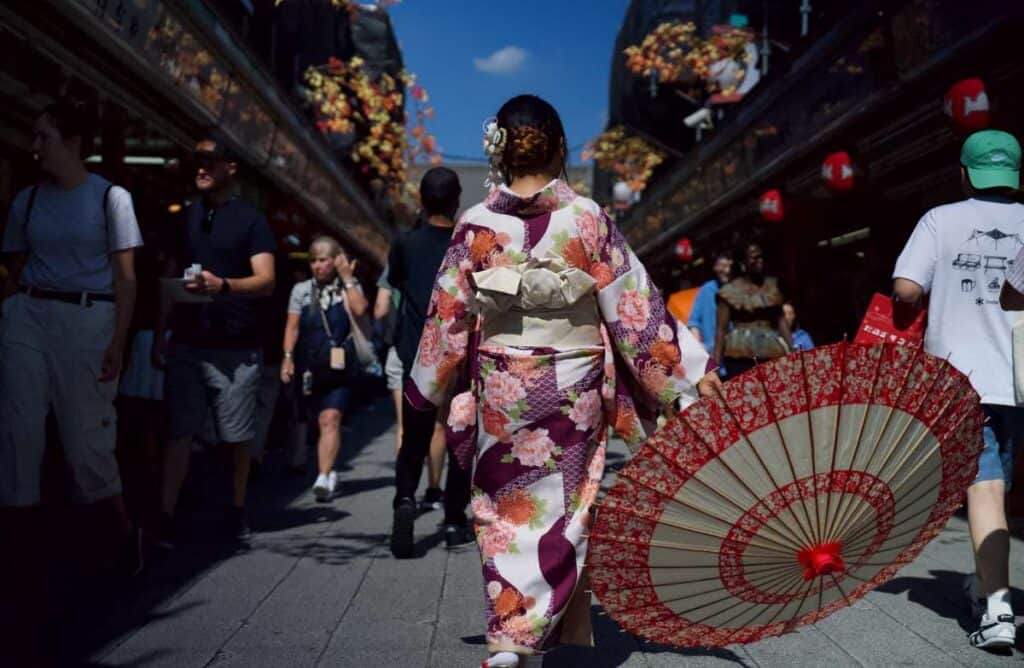
A short journey away, Asakusa is a step back in time, centred around the historic Senso-ji Temple.
For a great introduction to the area, stop by the Asakusa Culture Tourist Information Center. Located right across from Kaminarimon Gate, this modern building offers helpful travel tips, maps, and an observation deck on the top floor with a fantastic view of Asakusa and the Tokyo Skytree. It’s a great spot to get your bearings before diving into the district.
Then, head over to Nakamise Shopping Street, which is lined with traditional stalls selling matcha sweets, handcrafted souvenirs, and classic street food like Asakusa Kagetsudō’s jumbo melon bread and Asakusa Menchi’s deep-fried menchi katsu.
To make the experience even more immersive, try our Kimono Experience—walk through the temple grounds in a beautifully crafted kimono, making for a stunning cultural experience (and some of the best photos of your trip).
After visiting the temple, stop by Sumida Park for a scenic riverside walk or explore Kappabashi Street, a dream for food lovers and chefs looking for quality kitchenware. Beer enthusiasts should check out the Asahi Beer Hall, a modern architectural landmark.
Ueno
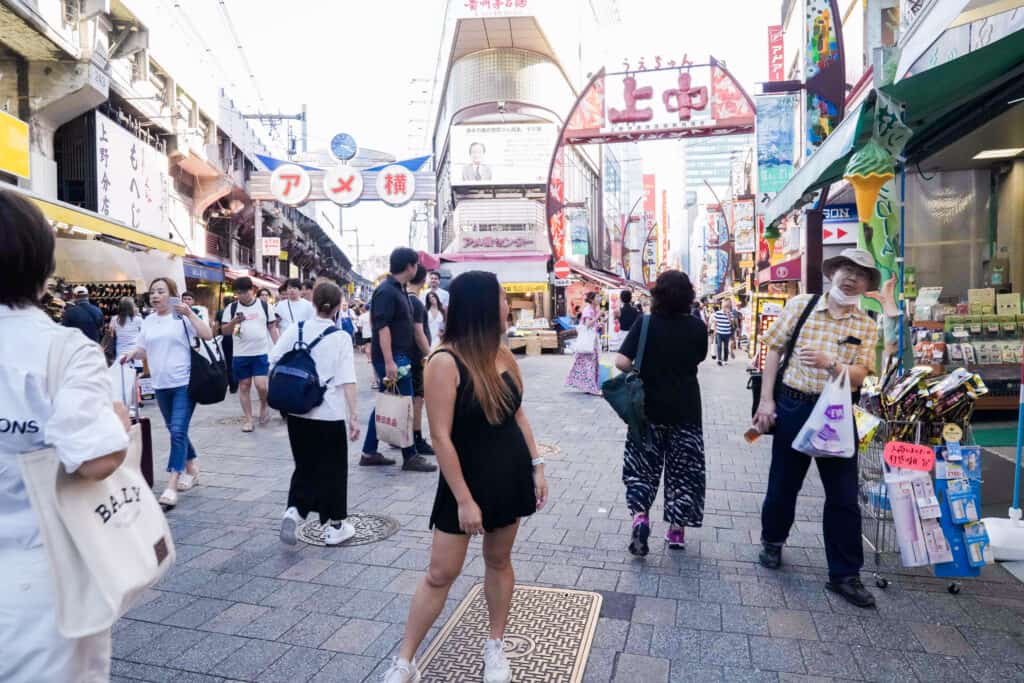
Next, head to Ueno, home to Ueno Park, a cultural hub filled with museums, shrines, and seasonal scenery. If you visit during cherry blossom season, this is one of Tokyo’s most famous hanami spots. The park is also home to Ueno Zoo, where you can see its beloved giant pandas. If you’re interested in history and art, visit the Tokyo National Museum for traditional Japanese artefacts, or the National Museum of Western Art, a UNESCO-listed building featuring works from Van Gogh to Rodin.
For shopping, the bustling Ameyoko Shopping District is packed with market stalls selling everything from fresh seafood to streetwear.
If you’re feeling hungry, Teppanyaki steak dining TAKA serves top-quality A5 Wagyu, while Yansando Ueno Honten is known for its classic Japanese barbecue. Those looking for fresh sushi should check out Uogashinihonichi Okachimachiten, which sources its fish directly from Toyosu Market.
Akihabara
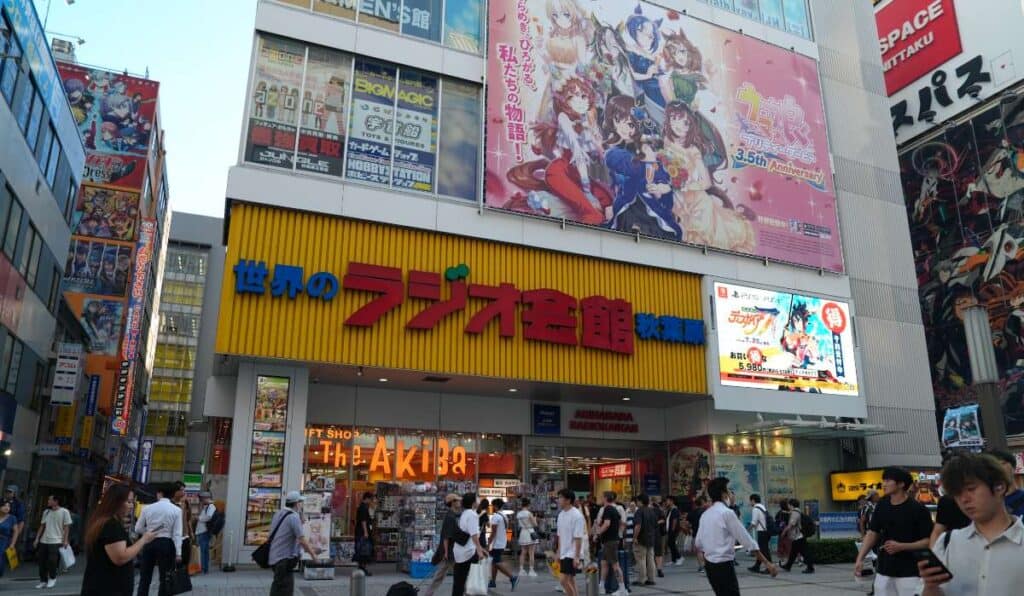
End the day in Akihabara, Tokyo’s ultimate hub for anime, gaming, and tech. Multi-floor stores like Mandarake Complex are treasure troves of rare manga, while Super Potato Akihabara Branch is heaven for retro gaming fans. Radio Kaikan is packed with otaku merchandise, and GiGO and Taito Station are ideal spots to experience Japan’s vibrant arcade culture.
For a deep dive into Akihabara’s subculture, our Otaku Tour takes you through hidden anime shops, rare collectible stores, and even maid cafes, offering an authentic look into the district’s unique energy.
For food, Aoshima Shokudo serves legendary ginger shoyu ramen, while Tonkatsu Marugo is Michelin-recommended for its perfectly crispy pork cutlets. If you’re after something different, Namaiki specialises in raw meat dishes, while Toritsune Shizendo is famous for its rich, flavourful oyakodon.
If you’re looking to explore Tokyo’s biggest highlights in one seamless trip, our Tokyo One-Day Tour covers it all, blending historical landmarks with modern cityscapes.
Day 2: Harajuku, Shibuya & Shinjuku (Stay in Tokyo)
Harajuku
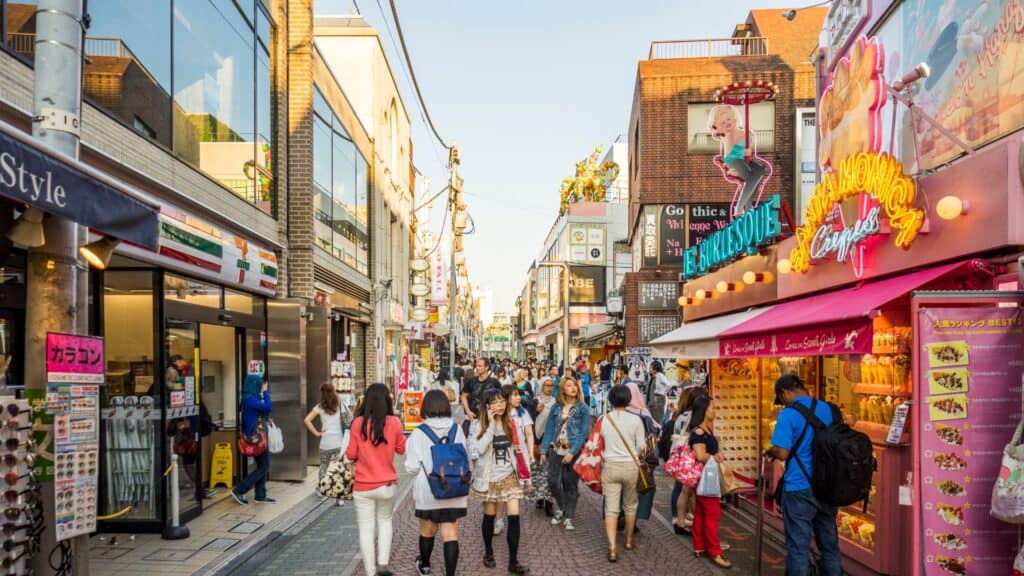
Start the day in Harajuku, the centre of Tokyo’s youth culture. Takeshita Street is packed with vintage shops, unique fashion boutiques, and famous street food. Stop for a giant rainbow cotton candy from Totti Candy Factory, grab a Japanese-style crepe from Marion Crepes, or explore the side streets for hidden gems.
For a break from the crowds, wander behind the main streets to find smaller, stylish cafes, indie art galleries, and curated fashion shops. If you want high-end shopping, Omotesando, known as the Champs-Elysees of Tokyo, is just around the corner.
Harajuku is also home to several animal cafes, including Dog Cafe RIO, Mame Shiba Cafe, Owl Village Cafe, and OttersFamily Otter Petting, where you can take a break and enjoy time with adorable animals.
A short walk away, Meiji Jingu offers a peaceful escape from the city. The 15-minute walk to the shrine is surrounded by towering trees, with sake barrels and wooden prayer plaques lining the path.
Shibuya
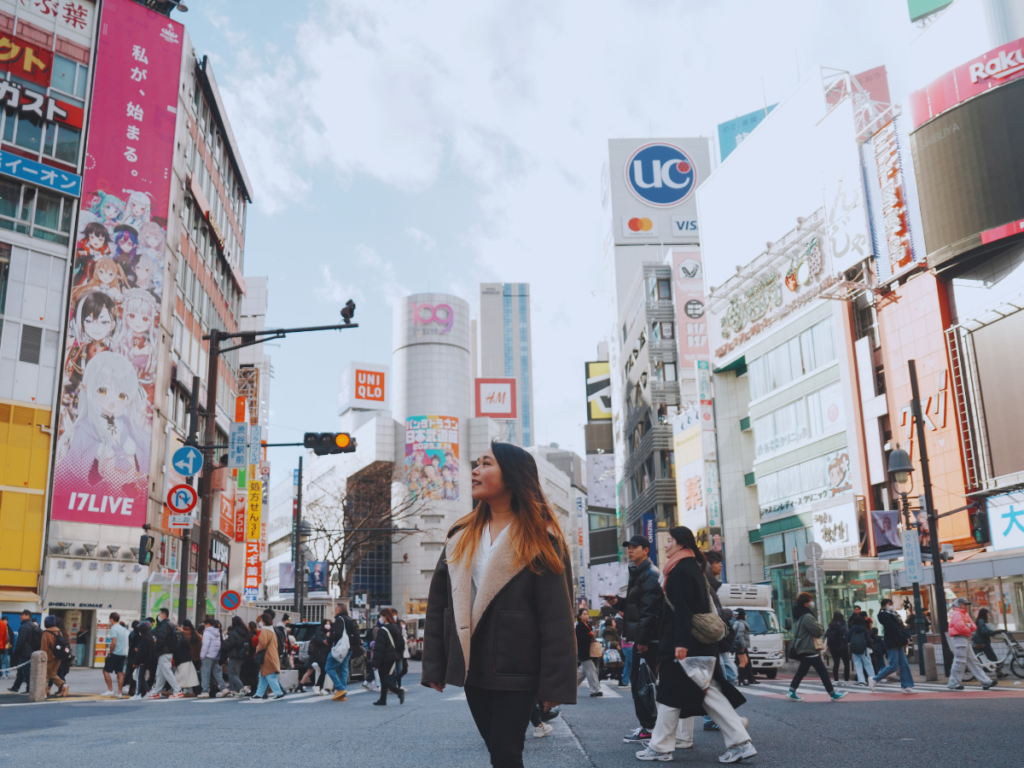
From Harajuku, it’s just a short walk or train ride to Shibuya.
Start at the legendary Shibuya Crossing, where hundreds of people scramble across the intersection in every direction. For the best view, grab a coffee at the Starbucks overlooking the crossing or head to the Magnet by Shibuya rooftop.
Nearby is the Hachiko Statue, Tokyo’s most famous meeting spot. Beyond the crossing, explore Shibuya Center-Gai, a lively street packed with shops, arcades, and neon lights. For shopping, visit Shibuya Parco (home to the Nintendo Store and Pokemon Center), Shibuya Scramble Square, and Miyashita Park, which also has a skate park and bouldering walls.
For a hidden gem, check out Nonbei Yokocho, an alley filled with tiny, nostalgic izakayas.
Shinjuku
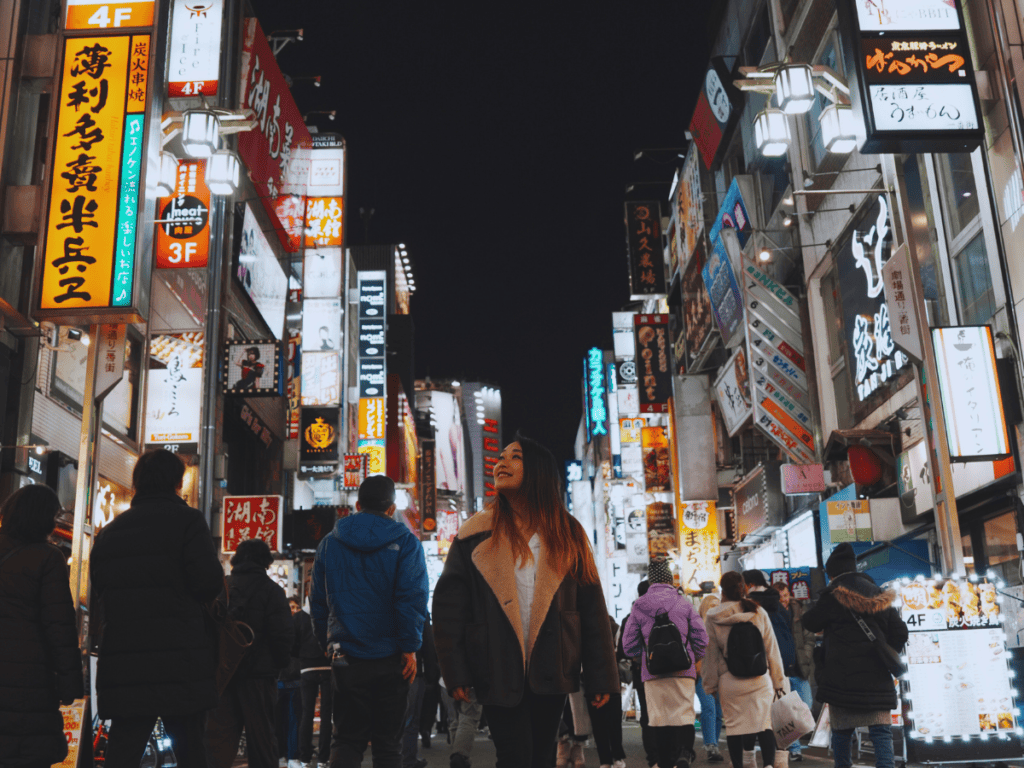
As the sun sets, head to Shinjuku, where the city truly comes alive.
Start with the Tokyo Metropolitan Government Building (Tocho) for a free observation deck offering panoramic city views, including Mount Fuji on clear days.
Next, explore the bustling streets of Kabukicho, Tokyo’s famous entertainment district. Stop by Hotel Gracery to see the massive Godzilla head towering over the street.
For a completely different atmosphere, visit Golden Gai, a maze of tiny, nostalgic bars, each with its own theme.
For a truly special Tokyo dining experience, consider an omakase sushi meal, one of the best ways to experience Japan’s culinary mastery. Taste expertly crafted courses prepared by top-tier chefs.
If you’re looking for a late-night adventure, karaoke spots, jazz bars, and whisky bars are everywhere—perfect for ending your night in Tokyo’s most dynamic district.
Day 3: Pick Your Own Tokyo Adventure (Stay in Tokyo)
By now, you’ve got a feel for Tokyo, so today is all about choosing your own adventure. Whether you’re into art, history, shopping, or hands-on experiences, Tokyo has something for everyone.
🎨 Love Art & Museums?

For art lovers, Roppongi is the place to be. This district is known for its sleek modern vibe and world-class museums.
- Mori Art Museum – Located at the top of Roppongi Hills Mori Tower, this contemporary art museum features rotating exhibitions of international and Japanese artists, covering everything from avant-garde installations to photography and digital media. Bonus: Your ticket includes access to the Tokyo City View observation deck, where you can enjoy breathtaking cityscapes from above.
- teamLab Planets – If you’re after something truly immersive and interactive, this digital art museum in Toyosu is a must-visit. Step into huge, mesmerising rooms filled with floating lights, mirrored infinity spaces, and knee-deep water exhibits that respond to your movements. Wear shorts or skirts you can roll up, as you’ll literally be walking through some of the exhibits!
If you want even more, The National Art Center in Roppongi is another fantastic stop, featuring an impressive rotating collection of exhibits in a beautifully designed building.
🏡 Want to Explore Cute Neighbourhoods?
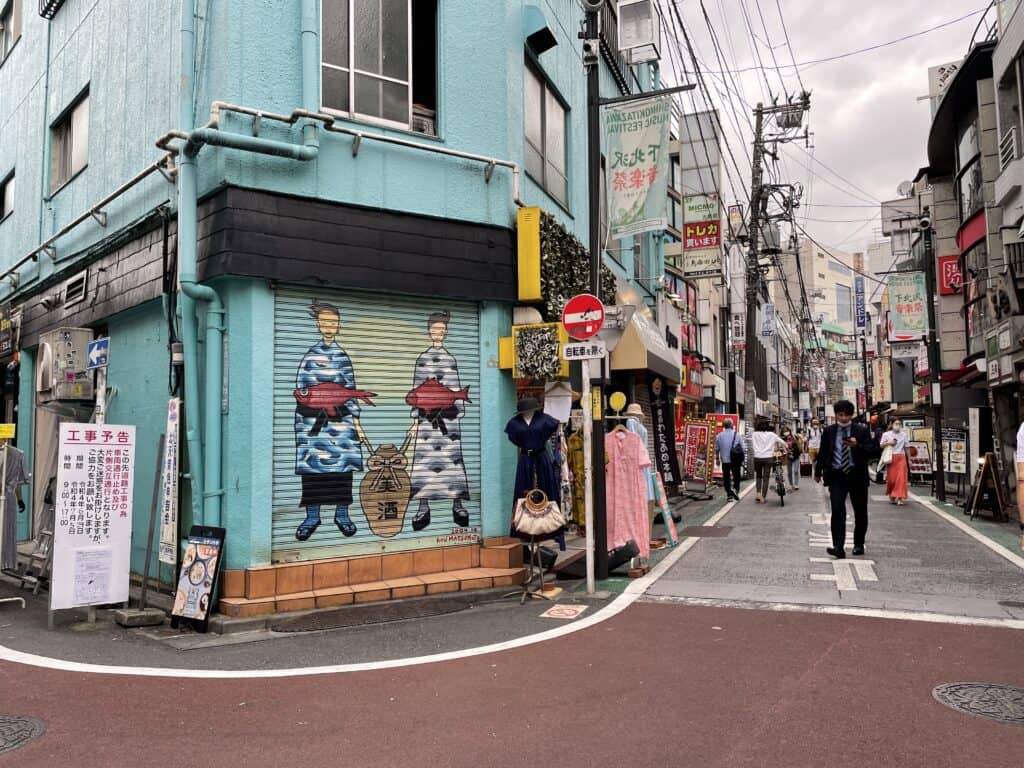
For a slower-paced day, visit one of Tokyo’s charming local neighbourhoods—each with its own unique vibe.
- Shimokitazawa – Tokyo’s bohemian paradise, known for its vintage clothing shops, indie record stores, and artsy cafes. Wander through its maze of alleyways, where you’ll find hidden bookstores, live music venues, and creative thrift stores selling everything from retro kimonos to 90s streetwear. The area has a laid-back, youthful feel, making it a great place to relax and explore without a set plan.
- Yanaka – If you’re looking for “Old Tokyo” vibes, this traditional neighbourhood is perfect. One of the few areas that survived World War II bombings, Yanaka retains its nostalgic charm, with narrow streets, wooden houses, and historic temples. Stroll down Yanaka Ginza shopping street, where you can find handmade crafts, traditional sweets, and tiny local eateries. Don’t miss Nezu Shrine, famous for its beautiful red torii gate tunnel, reminiscent of Kyoto’s Fushimi Inari Shrine.
🛍 Shopping Addict?
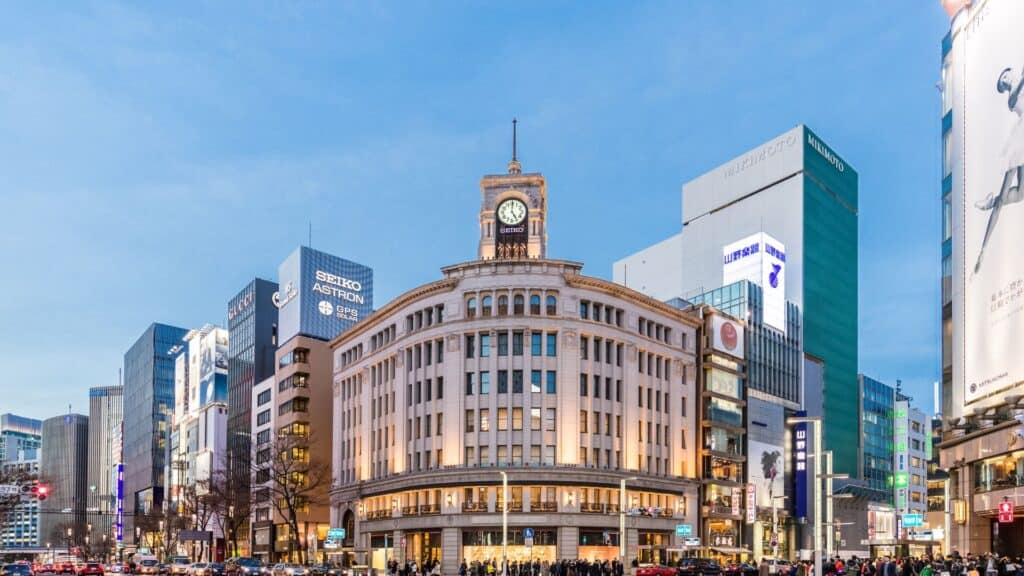
If retail therapy is your thing, Tokyo is a shopping paradise, whether you’re after high-end luxury or the latest streetwear trends.
- Ginza – Tokyo’s luxury shopping district, home to flagship stores of global brands like Chanel, Louis Vuitton, and Dior. Even if you’re not planning to splurge, Ginza’s department stores like Mitsukoshi and Wako are worth a visit just for their stunning architecture and incredible basement food halls (depachika), where you can sample gourmet sweets, sushi, and bento boxes.
- Shinjuku & Shibuya – If you’re after trendy, fast-fashion, or unique streetwear, these areas are your best bet. In Shibuya, explore Shibuya 109, a fashion mecca for edgy, youthful styles, or head to Miyashita Park for a mix of high-street brands and Japanese designer stores. Over in Shinjuku, check out Lumine and Isetan, two department stores with a mix of international and local fashion brands.
For something more unique, visit Cat Street, a hidden shopping street between Harajuku and Shibuya, known for its indie fashion boutiques, sneaker stores, and stylish concept shops.
🍜 Try a Hands-On Experience
If you want to get involved and learn something new, Tokyo offers plenty of hands-on experiences that Flip Japan can arrange for you.
Pottery & Kintsugi (Gold Repair) Workshops
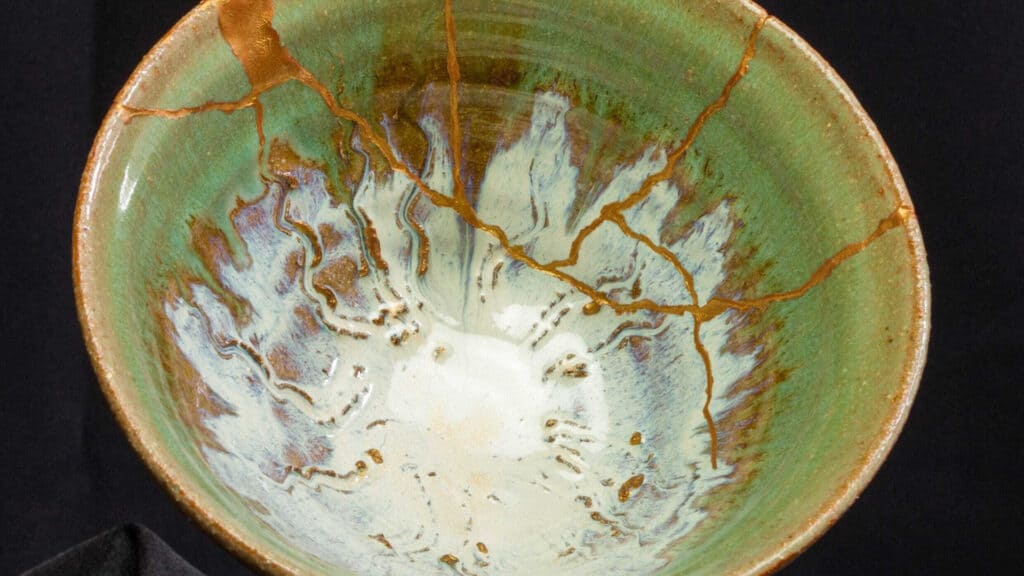
Try your hand at traditional Japanese ceramics by joining a pottery class, where you can make your own sake cups or bowls. Or, learn the ancient art of kintsugi, where broken pottery is repaired with gold lacquer, turning cracks into something beautiful.
Ramen or Sushi Cooking Classes
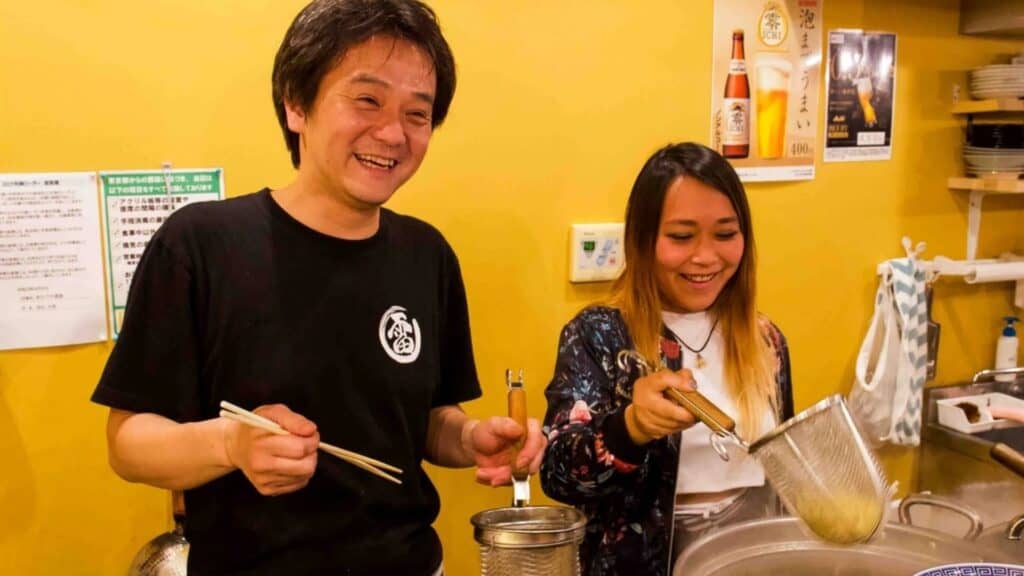
A must for food lovers who want a deeper appreciation of Japanese cuisine. Learn the techniques behind making rich, flavourful ramen broth and hand-pulled noodles, or master the art of sushi-making, from slicing fresh fish to perfecting the shape of nigiri. This isn’t just a meal—it’s a chance to gain a skill and bring a taste of Japan back home with you.
Morning Sumo Experience
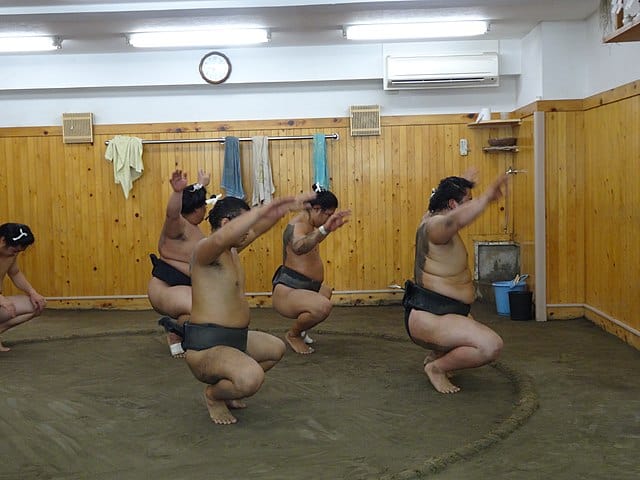
For an experience you can only have in Japan, start the day with a Morning Sumo Experience. This is a rare opportunity to watch sumo wrestlers train up close at a sumo stable, where you’ll see their strict practice routines, powerful matches, and the incredible discipline that defines this traditional sport.
Seeing the wrestlers train in the early hours is an unforgettable way to witness a part of Japanese culture that few travellers get to experience. After the session, you can even try chanko nabe, the high-protein hot pot that sumo wrestlers eat to bulk up.
Day 4: Day Trip from Tokyo! (Stay in Tokyo)
Tokyo is amazing, but today is the perfect chance to escape the city and experience a completely different side of Japan. Doesn’t matter if you’re after stunning mountain scenery, traditional hot springs, or coastal temples, there’s a perfect day trip for you.
Mt. Fuji & Kawaguchiko
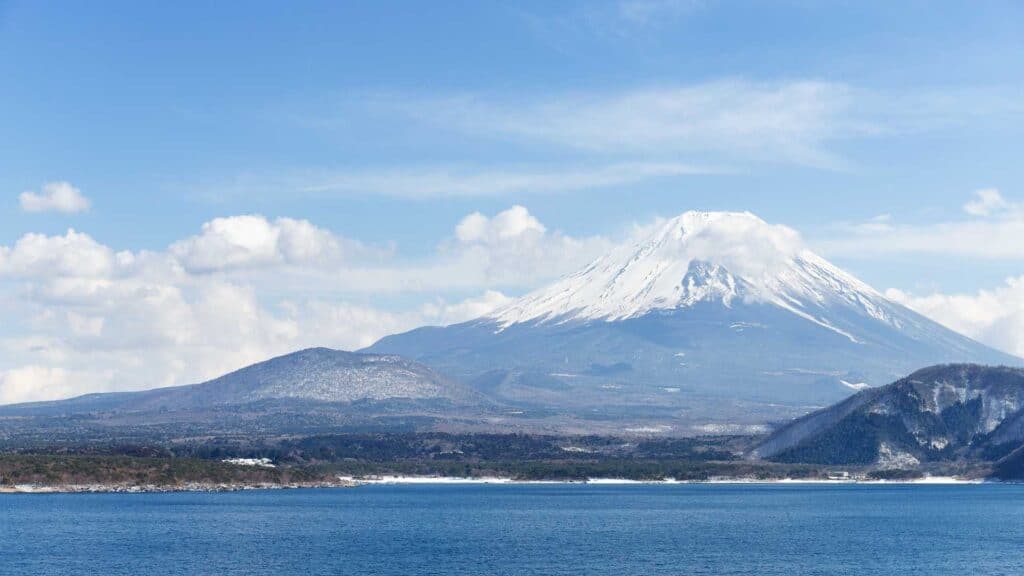
If seeing Mt. Fuji up close is on your bucket list, a trip to Kawaguchiko is the best way to experience Japan’s most famous peak.
One of the best places to admire Fuji is Lake Kawaguchi, where the still waters reflect the mountain perfectly on clear days. The lakeside is a great place for a peaceful walk, and Oishi Park is particularly popular for its stunning views and seasonal flower displays.
For those after the most iconic postcard view of Fuji, Chureito Pagoda offers an incredible sight with a five-story red pagoda framing the mountain—especially breathtaking during cherry blossom or autumn foliage seasons. The climb up is steep, but the view is worth every step.
For a more immersive experience, visiting a sake brewery is a great way to learn about and taste Japan’s most famous rice wine. The local hoto noodle-making experience is another must-try, where you can prepare thick, chewy noodles cooked in a rich miso-based soup filled with vegetables—a perfect meal for the cool mountain air.
Hakone
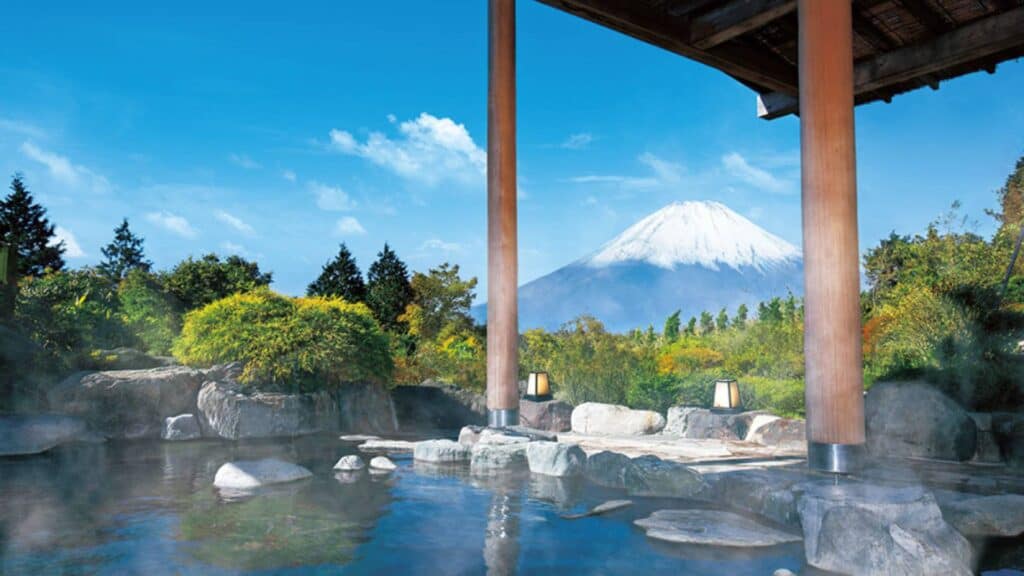
For those looking for a relaxing day with hot springs, scenic views, and unique cultural experiences, Hakone is the perfect getaway.
The Hakone Open-Air Museum blends nature and art, featuring massive outdoor sculptures set against a stunning mountain backdrop, along with an indoor Picasso collection.
A ride on the Hakone Ropeway leads up to Owakudani, a volcanic valley with steaming hot springs and sulphur vents. The smell of sulphur fills the air, and the region is famous for its kuro tamago (black eggs), boiled in the hot spring waters—legend has it that eating one will add seven years to your life.
For a more tranquil experience, Hakone Shrine, nestled deep in the forest by Lake Ashi, is known for its famous red torii gate standing in the water. Taking a boat cruise across the lake is a great way to admire the scenery, and on clear days, you can even catch a view of Mt. Fuji from the water.
For those interested in traditional Japanese craftsmanship, join a Wooden Coaster Making Experience, which involves assembling geometric patterns from natural wood. During this hands-on activity, you’ll choose from a variety of wood colours and patterns, then carefully assemble them into a stunning, handcrafted coaster.
Hakone is one of Japan’s top onsen (hot spring) destinations, with plenty of options for both public baths and private onsen experiences. A soak in a natural mineral-rich hot spring is the perfect way to unwind. Getting around Hakone is easy with the Hakone Free Pass, which covers transport for the train, ropeway, cable car, and boat cruises, making the trip both convenient and budget-friendly.
Kamakura & Enoshima
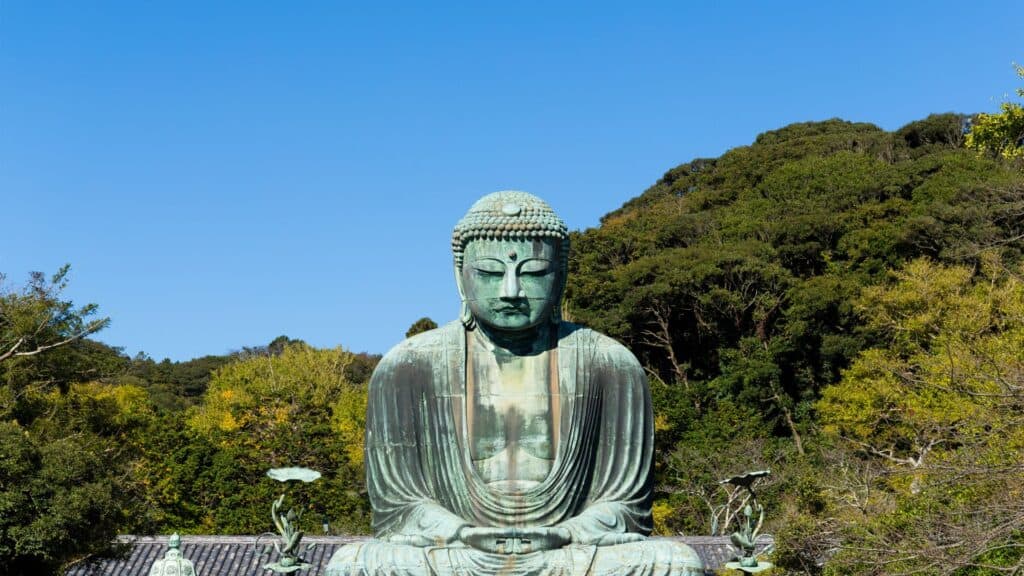
For a mix of historical temples, Zen culture, and seaside scenery, Kamakura and Enoshima are a fantastic choice.
Kamakura is home to the Great Buddha (Daibutsu), one of Japan’s most famous Buddhist statues. This massive bronze Buddha, standing 13.35 metres tall, has been watching over the city since the 13th century. Unlike most Buddhas, this one is outdoors, making it a unique sight against the surrounding nature.
Nearby, Hasedera Temple offers stunning ocean views, a golden statue of Kannon (the goddess of mercy), and beautiful seasonal gardens. The Tsurugaoka Hachimangu Shrine, Kamakura’s most important Shinto shrine, is a striking landmark with a long approach lined by torii gates and cherry trees, making it especially beautiful in spring.
For those looking for a deeper cultural experience, Zen meditation at a local temple provides a rare opportunity to practice mindfulness under the guidance of Buddhist monks. Kamakura has a rich history with Zen Buddhism, and this experience offers a moment of quiet reflection away from the crowds.
Kamakura’s Komachi Street is the perfect place to explore local shops and street food, with must-try snacks like shirasu-don (fresh whitebait rice bowl), sweet potato soft serve, and freshly grilled rice crackers.
Just a short train ride away, Enoshima Island offers breathtaking coastal views, hidden shrines, and nature trails. The Enoshima Shrine complex is scattered across the island, with stunning sea views and peaceful gardens. Climbing up to the Enoshima Sea Candle observation tower gives a panoramic view of the coastline, while the Iwaya Caves hold fascinating Buddhist carvings.
Riding the Enoden Line, an old-school tram that runs along the coastline, is part of the charm of visiting Kamakura and Enoshima. With ocean views on one side and rolling green hills on the other, it’s one of the most scenic train rides in Japan.
If you want to bring home a truly unique souvenir, try a Hanko Making Experience. In Japan, hanko (personalised name stamps) are traditionally used in place of signatures, and creating your own lets you design a custom stamp engraved with your name in kanji or hiragana. It’s a one-of-a-kind keepsake that’s both practical and meaningful.
Another great hands-on activity is the Chopstick Making Experience. Using traditional woodworking techniques, you’ll carve and customise your own high-quality Japanese chopsticks, choosing different shapes, sizes, and finishes. A perfect way to take home a piece of Japanese craftsmanship that you can use every day.
Day 5: Off to Kyoto’s Temples, Tea Houses & Old Streets (Stay in Kyoto)
Time to say goodbye to Tokyo and hop on a Shinkansen (bullet train) to Kyoto, Japan’s cultural heart. The ride itself is an experience—so grab an ekiben (train bento) from the station and enjoy the journey. If it’s a clear day, you might even catch a view of Mt. Fuji from your window.
Fushimi Inari Shrine
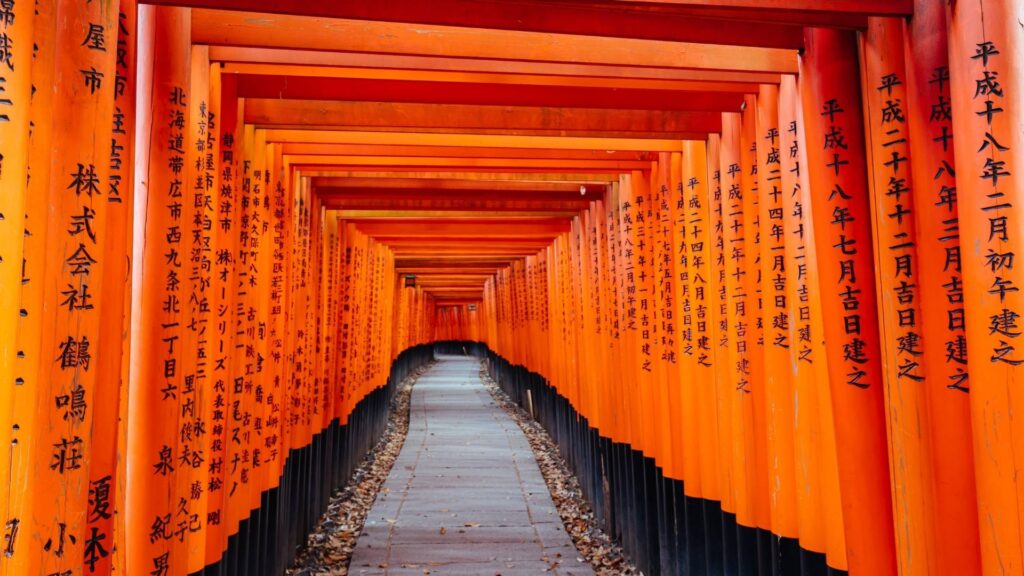
First stop: Fushimi Inari Shrine, home to Kyoto’s most famous thousands of bright red torii gates winding up the hillside. The entrance is always packed, but if you walk further in, you’ll find quieter, more peaceful sections where you can really take in the beauty of the gates weaving through the forest.
If you’re feeling up for it, the hike to the top takes around 1.5 hours one way, but there’s a viewpoint with small local shops along the way where you can grab a drink and some snacks.
For a matcha break, stop by Inari Saryo, where you can try their famous torii-themed parfait, or grab something sweet from Fushimi Inari Sando Chaya, known for its matcha honey parfaits and Kyoto-style desserts.
Kiyomizu-dera & the Historic Streets of Kyoto

Next, head to Kiyomizu-dera, one of Kyoto’s most stunning temples, perched on a hillside with an epic city view. The massive wooden stage, built without nails, extends over a sea of trees that turn bright red in autumn and pink in spring. Take your time wandering through the temple grounds before making your way down to Ninenzaka and Sannenzaka, two of Kyoto’s most charming streets.
Lined with traditional wooden shops, tea houses, and matcha dessert spots, these streets are where you’ll find some of Kyoto’s best souvenirs. Stop for matcha ice cream or freshly made yatsuhashi (cinnamon rice crackers), or pop into Itoken x Sou for their famous baby castella cakes shaped like Kyoto’s textile patterns.
For something different, visit Yasaka Kōshin-dō Temple, a small but colourful temple covered in brightly coloured cloth wish balls, or stroll through Maruyama Park, a favourite local spot known for its weeping cherry trees in spring.
Kyoto is famous for its sake, thanks to its pure spring water and centuries-old brewing traditions. A sake tasting tour is the best way to sample different varieties and learn about Kyoto’s rich brewing culture. It’s a perfect way to cap off your first night in Japan’s ancient capital.
Day 6: Arashiyama, Kinkaku-ji, Nishiki Market (Stay in Kyoto)
Arashiyama Bamboo Forest & Monkey Park
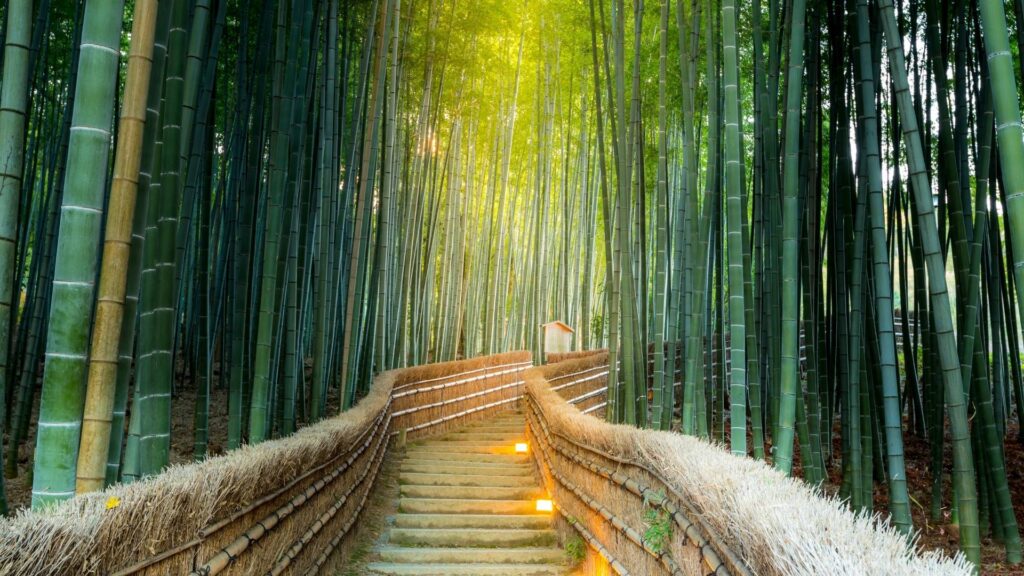
Start the morning at Arashiyama Bamboo Forest, one of Kyoto’s most famous sights. Arriving early means fewer crowds, letting you experience the quiet rustling of towering bamboo stalks in a peaceful atmosphere. Nearby, Tenryu-ji Temple, a UNESCO World Heritage Site, is worth visiting for its beautiful Zen gardens, which change with the seasons.
For a hidden gem, Okochi Sanso Garden offers winding paths, traditional tea houses, and breathtaking views of the Kyoto mountains. If you want something more adventurous, Arashiyama Monkey Park Iwatayama is a short hike up the hillside, where wild macaques roam freely with panoramic views over the city.
The Togetsukyo Bridge is another must-see, stretching across the Hozu River with forested mountains in the background. The area is especially stunning in autumn when the leaves turn deep red and gold.
Kinkaku-ji (Golden Pavilion)

Next, head to Kinkaku-ji, the Golden Pavilion, one of Kyoto’s most iconic temples. Covered in gold leaf and reflecting beautifully on its surrounding pond, this Zen temple is truly picture-perfect in every season. While you can’t enter the temple itself, the walking paths through the gardens offer serene spots to take in the view.
Nearby, Kitano Tenmangu Shrine is a peaceful place to explore, especially if you’re visiting in February or March when its plum blossom trees are in full bloom.
Nishiki Market & Evening in Kyoto

End the day at Nishiki Market, known as Kyoto’s Kitchen, where you can wander through rows of small shops and food stalls selling fresh seafood, Kyoto delicacies, and traditional snacks. The lively atmosphere makes it a great place to explore, whether you’re trying Kyoto-style street food, browsing for souvenirs, or watching vendors prepare local specialties.
For a truly immersive Kyoto experience, try a Kimono Experience. Walking through Kyoto’s historic streets in an elegantly designed kimono makes for stunning photos and an authentic way to connect with the city’s traditional culture. Choose from a wide range of colours, patterns, and accessories before heading out to explore.
A traditional tea ceremony is the perfect way to experience Kyoto’s refined culture. Guided by a tea master, learn the art of preparing and drinking matcha in a beautifully preserved tea house. The ritual, from the precise movements to the quiet atmosphere, reflects Japan’s deep appreciation for harmony and mindfulness.
You can also step into Kyoto’s warrior history with a Samurai Experience. Learn the fundamentals of samurai sword techniques, wear traditional armor, and gain insight into the discipline and philosophy of the samurai way. It’s a hands-on way to connect with Kyoto’s rich past.
For something more fast-paced, try a Ninja Experience. Train in stealth techniques, shuriken (throwing stars), and other traditional ninja skills under expert guidance. It’s an exciting way to experience Japan’s legendary shadow warriors in action.
Day 7: Explore Kyoto at Your Own Pace (Stay in Kyoto)
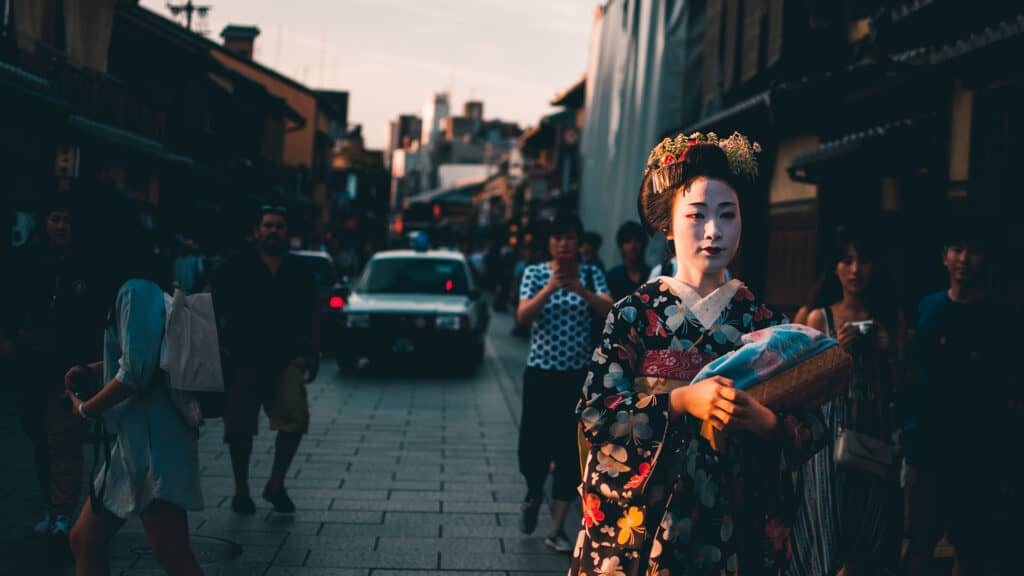
After days of sightseeing, today is all about slowing down and experiencing a different side of Kyoto. Away from the crowds of Arashiyama and Fushimi Inari, Kyoto has countless hidden temples, tranquil gardens, and hands-on cultural experiences that let you immerse yourself in its unique charm.
Philosopher’s Path & Nanzen-ji Temple
Start the morning with a peaceful walk along the Philosopher’s Path, a scenic stone walkway lined with cherry trees, quiet shrines, and charming little cafes. This peaceful trail follows a canal and is named after a Kyoto philosopher who used to walk this path daily in deep thought. It’s especially magical in spring when the cherry blossoms are in full bloom or in autumn when the leaves turn brilliant shades of red and gold.
At the southern end of the path, you’ll find Nanzen-ji Temple, one of Kyoto’s most impressive Zen temples. Its massive Sanmon Gate offers stunning panoramic views if you climb to the top, while the sprawling temple grounds and aqueduct provide a tranquil place to explore.
For an extra hidden gem, Konchi-in Temple, a sub-temple of Nanzen-ji, has one of Kyoto’s most beautiful dry rock gardens—a perfect place to sit and reflect.
Daitoku-ji Temple Complex & Secret Gardens
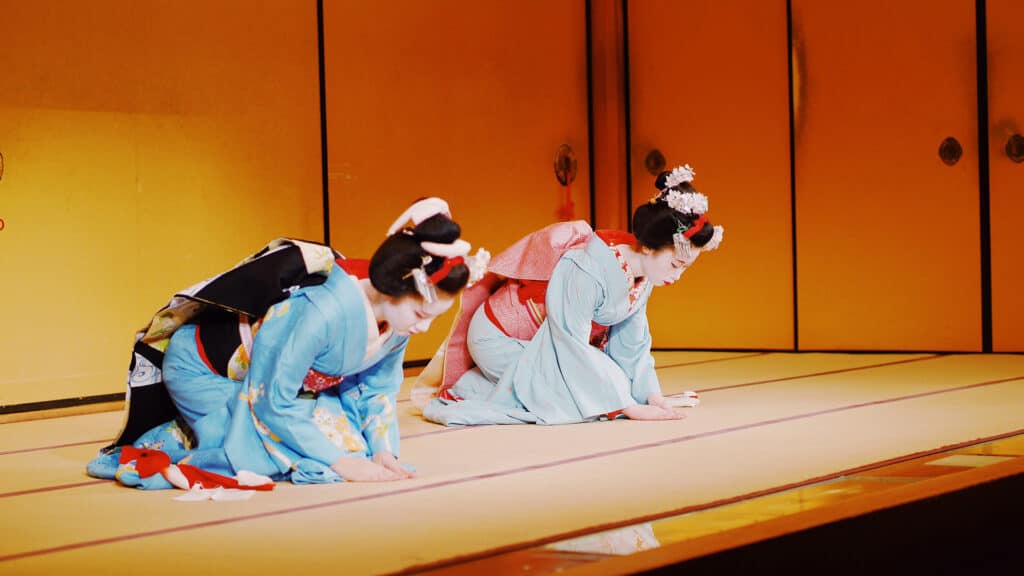
If you’re looking for a more off-the-beaten-path experience, head to Daitoku-ji, a Zen temple complex with multiple sub-temples, each featuring unique rock gardens, quiet pathways, and intricate wooden architecture. Unlike Kyoto’s more famous temples, this area is rarely crowded, making it a great place to slow down and enjoy a peaceful moment.
Many of the sub-temples offer a chance to experience Zen meditation, where you’ll sit in quiet reflection under the guidance of a monk. If you’re looking to truly embrace Kyoto’s Zen spirit, this is one of the best places to do it.
Kyoto is known for its handcrafted wagasa (traditional Japanese umbrellas), so why not make a mini version of your own? With a wagasa-making experience, you’ll be guided by skilled artisans, you’ll learn about the history and craftsmanship behind these beautifully designed umbrellas while decorating one with your own personal touch. It’s a fun, hands-on activity and a great keepsake from Kyoto.
Kyoto is famous for its geisha culture, and one of the most unforgettable experiences is having dinner with a real geisha or maiko (apprentice geisha). This exclusive experience offers a rare glimpse into Kyoto’s traditional entertainment world, where you’ll enjoy elegant performances of dance, music, and conversation, all while dining on a carefully prepared Kyoto-style meal.
The experience is about much more than just watching a performance—it’s a chance to interact with a geisha, ask questions about their rigorous training, and learn about the traditions they’ve upheld for centuries. It’s one of the best ways to step into Kyoto’s refined cultural world.
Day 8: Nara Deer & Osaka Nightlife (Stay in Osaka)
Today is a mix of historic charm and vibrant city energy. Spend the day in Nara, home to free-roaming deer and ancient temples, before heading to Osaka, Japan’s street food capital, for a night out in Dotonbori’s neon-lit streets.
Nara Park & Todai-ji Temple
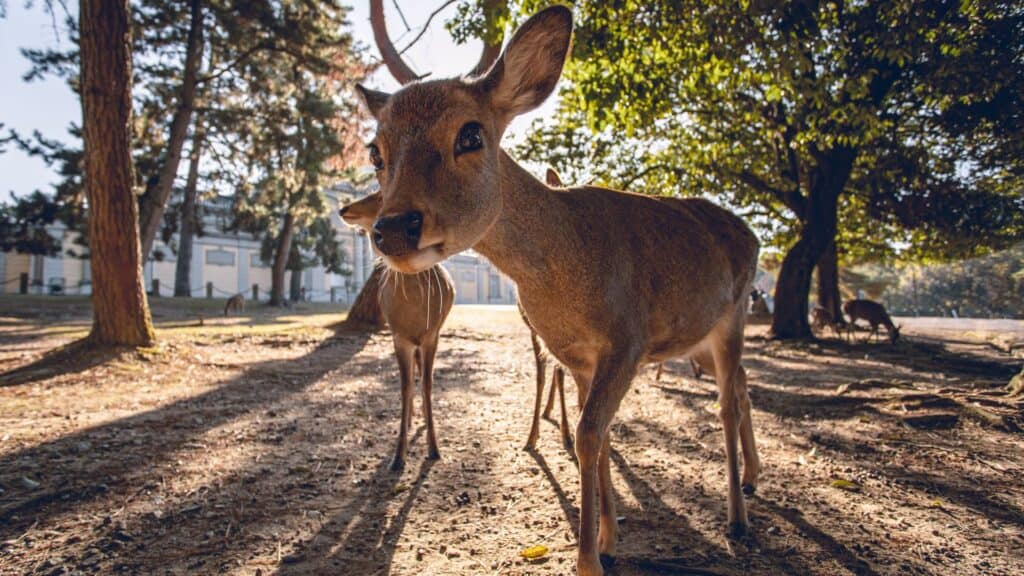
Nara Park is famous for its hundreds of freely roaming deer, which are seen as sacred messengers of the gods in Shinto belief. You can buy special deer crackers (shika senbei) to feed them, but be prepared—they can get a little pushy! The deer have even learned to bow in exchange for food, making for a fun and uniquely Japanese experience.
At the heart of the park stands Todai-ji Temple, one of Japan’s most important Buddhist sites. Inside, you’ll find the Great Buddha (Daibutsu), a towering bronze statue over 15 metres high, housed within one of the world’s largest wooden buildings. The temple complex is a UNESCO World Heritage Site and an awe-inspiring example of Japan’s ancient craftsmanship and religious devotion.
Osaka Castle
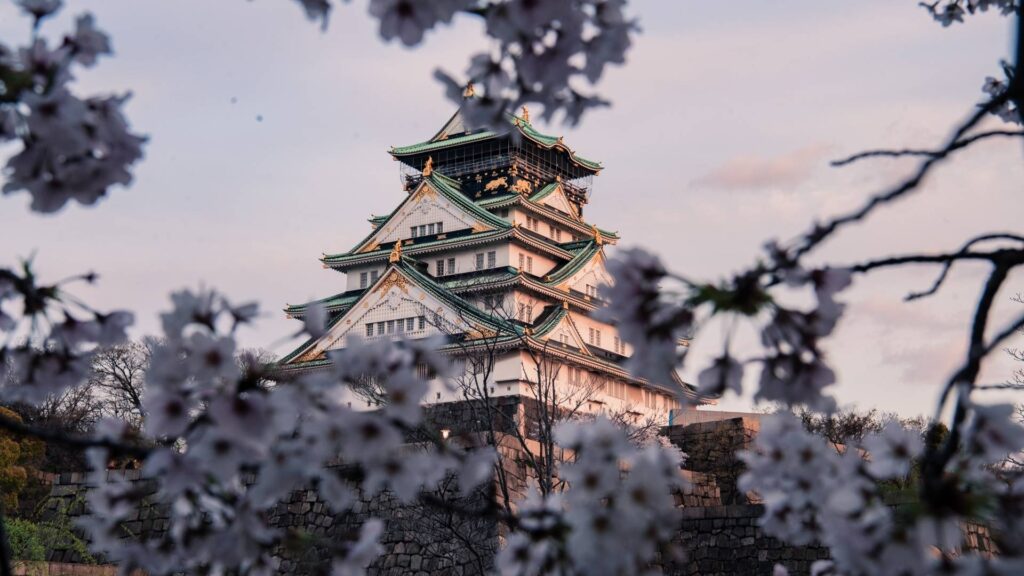
A short train ride from Nara brings you to Osaka, where the first stop is Osaka Castle. One of Japan’s most iconic castles, it played a major role in the country’s samurai history. The towering white-and-gold structure is surrounded by massive stone walls and scenic gardens, making it a great place for a midday walk with incredible views.
Inside, the castle houses a museum showcasing samurai armor, weapons, and the history of Osaka’s battles. The observation deck at the top offers a 360-degree view of the city, making it a worthwhile visit even if you’re not a history buff.
Dotonbori
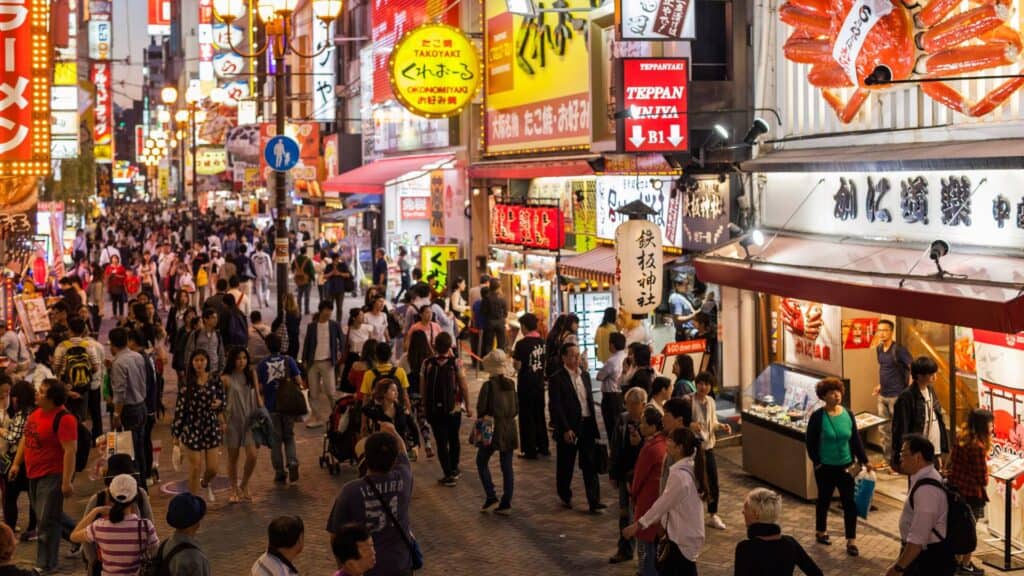
Once the sun sets, Dotonbori comes alive with its flashing neon signs, lively streets, and endless food stalls. This is Osaka’s most famous entertainment district, and no visit is complete without taking a photo in front of the massive Glico Running Man sign, one of the city’s most recognisable landmarks.
Osaka is known as “Japan’s Kitchen”, and Dotonbori is where you’ll find some of its most famous street foods. Try takoyaki (crispy octopus balls covered in sauce and bonito flakes) from one of the many stands, or dig into okonomiyaki (savory Japanese pancakes filled with cabbage, meat, and seafood) at a lively restaurant.
If you’re up for a true Osaka-style night out, an izakaya (Japanese pub) crawl is the way to go. Head to Hozenji Yokocho, a narrow alleyway lined with traditional lantern-lit izakayas, where you can grab small plates of grilled skewers, sashimi, and cold beer. This area has an old-school charm and is a great place to experience Osaka’s drinking culture like a local.
For a more modern and wild nightlife experience, Namba and Shinsaibashi have plenty of bars, nightclubs, and karaoke spots where you can keep the party going until the early morning.
Day 9: Theme Park or Day Trips
Today, you have the option to go all-in on thrill rides and immersive worlds at Universal Studios Japan, or take a day trip to one of Japan’s must-see destinations, whether that’s historic castles, world-famous wagyu, or a deep dive into Japan’s past in Hiroshima.
Universal Studios Japan

If you’re in the mood for an action-packed day, Universal Studios Japan (USJ) is the ultimate choice. This massive theme park in Osaka is home to some of the most exciting rides and immersive attractions in Japan, bringing Hollywood, anime, and gaming worlds to life.
The biggest highlight is Super Nintendo World, where you can step into a real-life Mario Kart race, punch question blocks, and explore the vibrant world of the Mushroom Kingdom. It’s an absolute must for Nintendo fans, with interactive games, character meet-and-greets, and hidden easter eggs throughout the area.
If you’re a Harry Potter fan, USJ’s Wizarding World of Harry Potter lets you stroll through Hogsmeade, sip on butterbeer, and experience the thrilling “Harry Potter and the Forbidden Journey” ride inside Hogwarts Castle. The attention to detail is incredible, making you feel like you’ve actually stepped into J.K. Rowling’s universe.
USJ is also known for its high-adrenaline roller coasters, including The Flying Dinosaur, where you’re suspended face-down in midair like a raptor, and Hollywood Dream – The Ride, which lets you choose your own music as you soar over the park. There are also themed seasonal events, including Halloween Horror Nights and special anime collaborations like Attack on Titan and Demon Slayer, making each visit unique.
Himeji Castle – Japan’s Most Stunning Fortress

For a more cultural day trip, take a short train ride to Himeji Castle, known as Japan’s most spectacular and well-preserved samurai castle. Often called the “White Heron Castle” due to its elegant white facade, it’s a UNESCO World Heritage Site and one of the few castles in Japan that has never been destroyed by war or natural disaster.
Climb up the multiple levels of the main keep, where you’ll walk through ancient wooden corridors and get a stunning panoramic view of the city from the top. The castle grounds are equally impressive, especially during cherry blossom season, when the trees surrounding the moat turn pink and create picture-perfect reflections in the water.
After exploring the castle, Koko-en Garden, a beautifully landscaped Japanese garden next door, is a peaceful place to unwind. It features tranquil ponds, traditional tea houses, and lush greenery, making it a perfect stop before heading back to Osaka.
Kobe
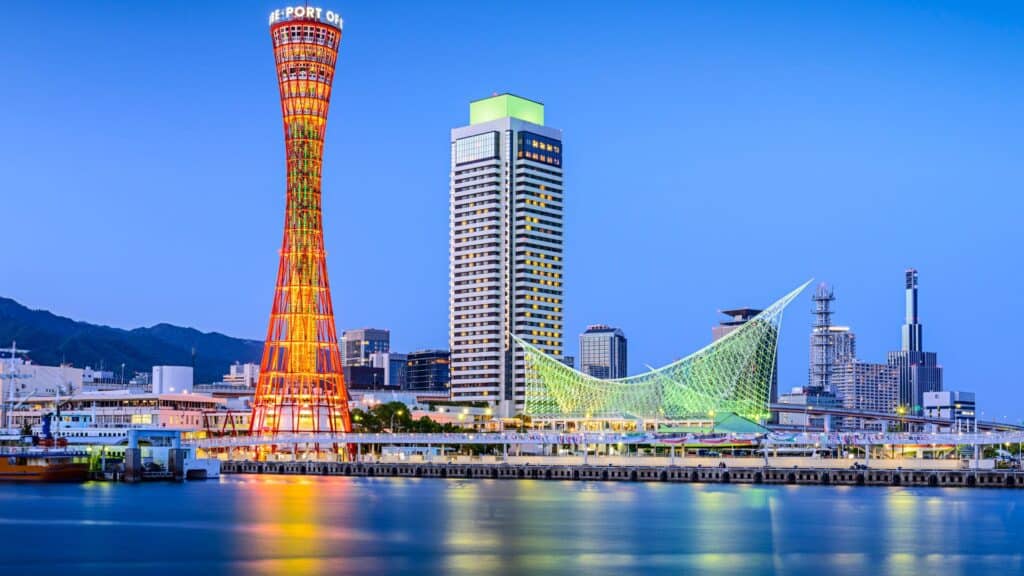
If you’re a food lover, there’s no better day trip than Kobe, the birthplace of Kobe beef. Known for its unmatched marbling, melt-in-your-mouth texture, and buttery flavour, authentic Kobe beef is a must-try when visiting the Kansai region.
There are many teppanyaki-style restaurants where skilled chefs grill the beef right in front of you, ensuring every slice is cooked to perfection. Some famous spots even serve Kobe beef sushi, Kobe beef burgers, and even Kobe beef ramen, giving you multiple ways to enjoy this legendary meat.
Beyond food, Kobe is a stylish and international city, known for its European-influenced architecture, harbour views, and Mount Rokko’s scenic lookout points. If you have time, a visit to Arima Onsen, one of Japan’s oldest hot spring towns, is a great way to relax in mineral-rich waters before heading back to Osaka.
Hiroshima & Miyajima
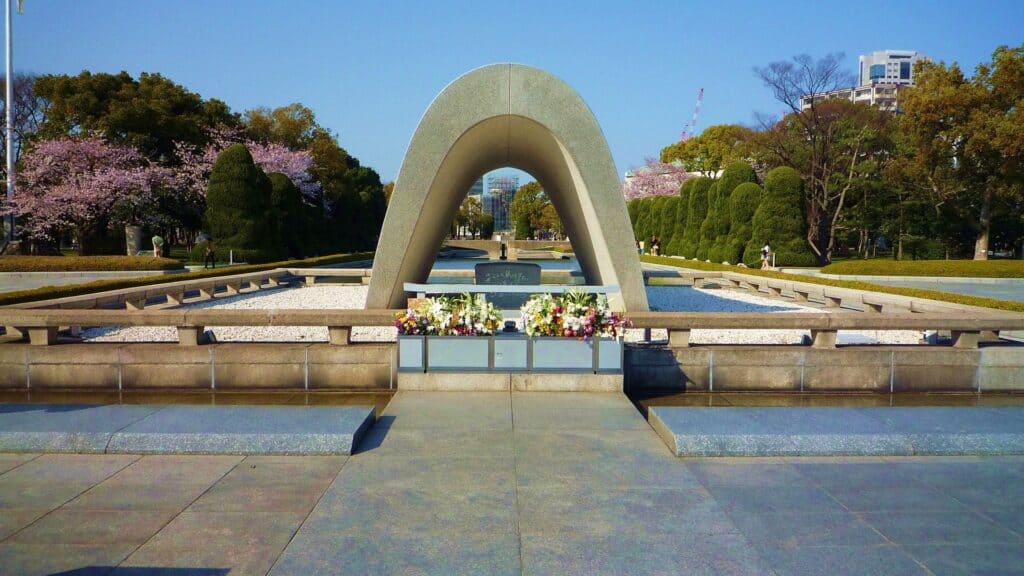
For a deeply moving and insightful experience, a day trip to Hiroshima and Miyajima Island is a powerful way to connect with Japan’s history and natural beauty.
Start at Peace Memorial Park, which commemorates the tragedy of the atomic bombing in 1945. The Hiroshima Peace Memorial Museum tells the story of the city before, during, and after the bombing, with exhibits that are both heartbreaking and educational. The A-Bomb Dome, one of the few buildings left standing near the hypocentre of the explosion, remains as a powerful symbol of peace and resilience.
After reflecting on history, take a short ferry ride to Miyajima Island, home to the famous floating torii gate of Itsukushima Shrine. At high tide, the vermillion gate appears to float on the water, creating one of Japan’s most iconic views. Miyajima is also known for its peaceful hiking trails, friendly wild deer, and delicious grilled oysters, making it a perfect contrast to the city’s historical sites.
Day 10: Osaka Foodie Day & Farewell
Your final day in Japan is all about exploring more of Osaka at your own pace and indulging in its legendary food scene one last time. This is your chance to wander through lesser-known neighbourhoods, discover hidden gems, and feast on any local dishes you haven’t tried yet.
Tsuruhashi for Osaka’s Korean Quarter & BBQ Heaven
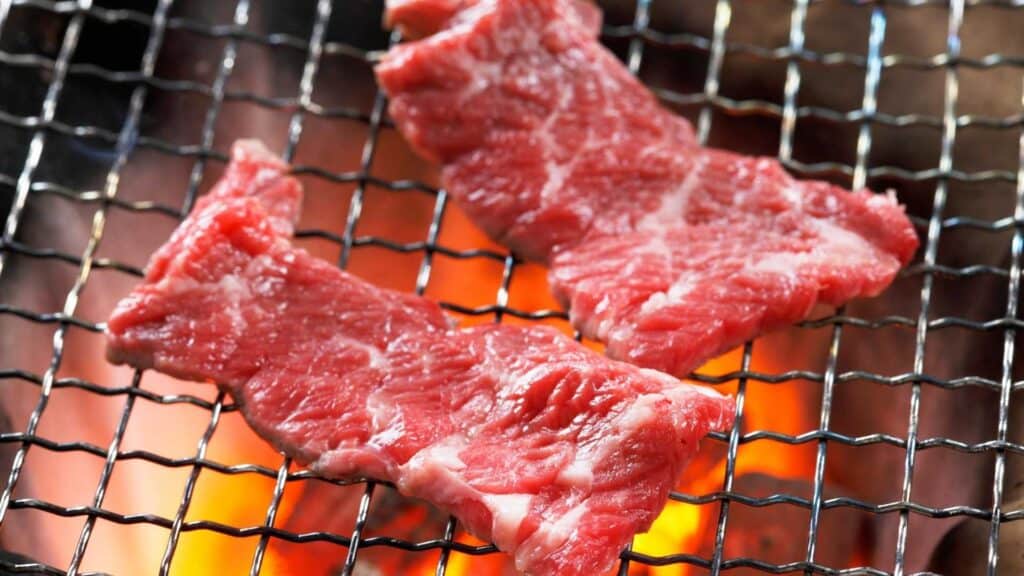
For a unique Osaka food experience, head to Tsuruhashi, home to one of Japan’s largest Korean communities. This area is known for its smoky Yakiniku (grilled meat) restaurants, bustling markets, and authentic Korean street food stalls.
Many restaurants here let you grill your own meat at the table, offering everything from A5 wagyu beef to spicy Korean-style short ribs. If you’re in the mood for something different from Japanese food, Tsuruhashi is the perfect spot to try kimchi pancakes, bibimbap, and hot, bubbling Korean stews.
Tenma for Izakaya-Hopping & Hidden Bars
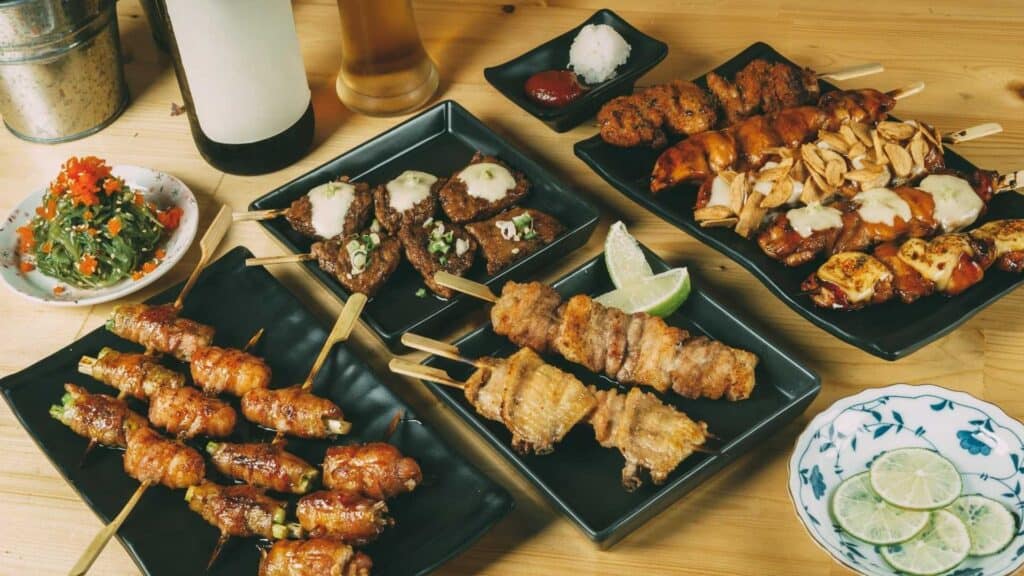
If you want a local Osaka experience, take a stroll through Tenma, a vibrant district packed with tiny standing bars, hole-in-the-wall ramen joints, and some of the city’s best izakayas.
This area is perfect for a midday or evening food crawl. Stop by a yakitori shop for freshly grilled skewers, grab a bowl of spicy miso ramen, or pop into a tiny bar for an ice-cold beer. Unlike Osaka’s busier tourist areas, Tenma has a laid-back, no-frills charm, and you’ll be surrounded by locals unwinding after work.
Kuromon Ichiba Market for One Last Feast
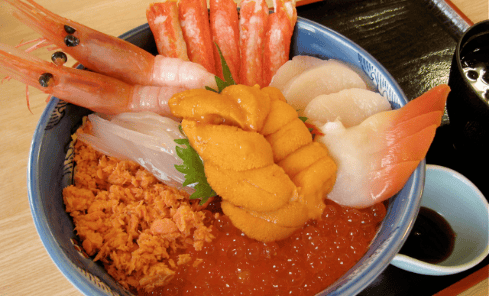
If you haven’t eaten enough street food on this trip, Kuromon Ichiba Market is the perfect place to fill in any gaps. Known as “Osaka’s Kitchen,” this lively food market is ideal for grazing—fresh sushi, grilled seafood, wagyu skewers, and Osaka-style comfort food are all on offer.
Some final must-tries include:
- Toro sushi – fatty tuna that melts in your mouth.
- Uni (sea urchin) and ikura (salmon roe) rice bowls – rich, buttery, and packed with umami.
- Charcoal-grilled squid and scallops – cooked fresh right in front of you.
- Freshly fried croquettes – crispy on the outside, creamy on the inside.
It’s a great way to enjoy one last taste of Japan before heading home.
For the ultimate send-off, join an Osaka Food & Drinks Tour to experience the city’s legendary nightlife and hidden local food spots. Led by a local guide, this experience takes you deep into hidden izakayas, back-alley food stalls, and standing bars that most tourists never find.

Expect to taste a mix of Osaka’s most iconic dishes, like okonomiyaki (savory pancakes), yakitori (grilled skewers), and horumon (grilled offal), while enjoying ice-cold beer, highballs, and sake. The best part? You’ll experience Osaka’s rowdy, friendly culture, meeting locals and fellow travellers along the way.
Osaka is a city that loves to eat, drink, and have fun, and there’s no better way to wrap up your trip than by toasting with great food, great drinks, and great company.
Looking Back on an Unforgettable 10-Day Journey

10 days in Japan may have flown by, but the memories will last a lifetime. From the bustling streets of Tokyo to the historic alleys of Kyoto, the serene beauty of Nara to the neon-lit energy of Osaka, this trip has been a perfect balance of culture, adventure, and, of course, incredible food.
You’ve experienced the tradition of a tea ceremony, the excitement of an otaku tour, the charm of walking through ancient temples in a kimono, and the thrill of hopping between izakayas in the heart of Japan’s nightlife. You’ve wandered through bamboo forests, fed friendly deer, seen iconic landmarks, and maybe even found a new favourite dish you’ll be craving long after you leave.
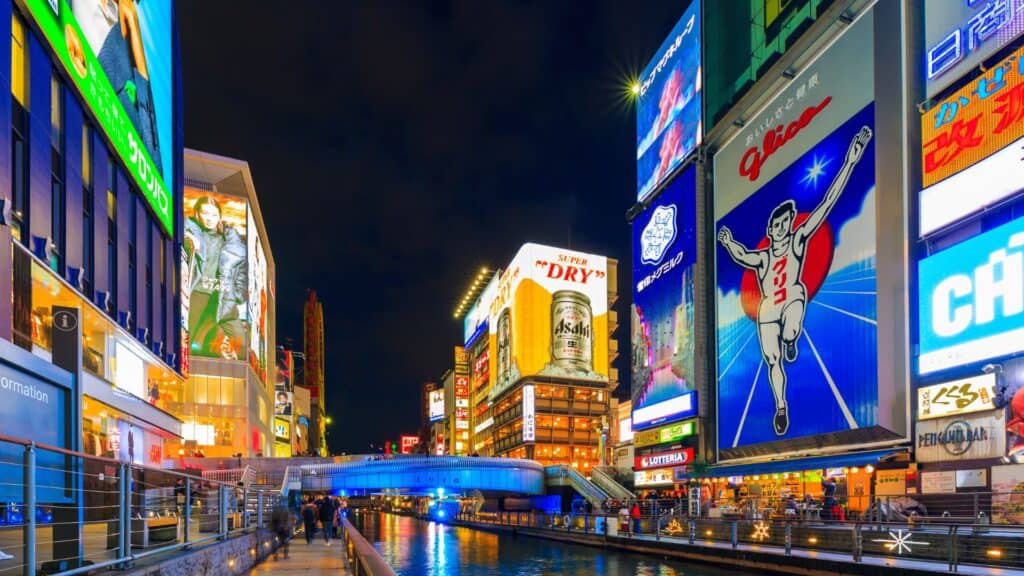
Japan is a country that never stops surprising, no matter how many times you visit. Every city, every district, and even every tiny alleyway has something unique waiting to be discovered. And while this trip may be coming to an end, it’s just the beginning of a lifelong love affair with Japan.
As you take your last stroll through Osaka’s streets or board your train to the airport, one thought will likely cross your mind—when can I come back?
You can use this jam-packed guide in full or simply pick a few places from the list to visit, tailoring your journey to fit your interests and schedule. However, if you want an itineray more personalised to your preferences, be sure to take advantage of Flip Travel Planner, where we provide our expertise and knowledge about Japan, to help you make the most out of your trip. We will recommend everything personalised and customised to you and your trip.
If you want a friendly local expert to show you around Japan, you can also join one of our guided tours. Try the Tokyo Food & Drinks Bar Tour to explore the city’s nightlife and enjoy local drinks. Or, join the Kyoto Must-Sees and Local Gems Tour to learn about traditional Japanese culture.

